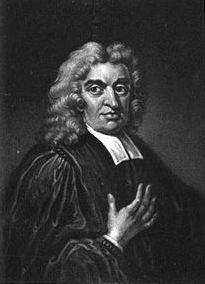Francis Blomefield and his “Essay Towards A Topographical History of the County of Norfolk.”

Francis Blomefield was born on 23rd July 1705 and died of smallpox on 16th January 1752. He was an aficionado of historical records and writings who produced “An Essay Towards A Topographical History of the County of Norfolk“. This is available on-line and can be searched by parish. There is extensive information about Martham much of which I have used on this website.
During his lifetime he also compiled and published detailed accounts of the city of Norwich, Thetford and the southern hundreds of Norfolk but died before the whole work could be completed.
Francis was born in the village of Fersfield in south Norfolk, the eldest son of yeoman farmers, Henry and Alice Blomefield. He was educated at Diss and Thetford Grammar Schools. In April 1724, he was admitted to Caius College, Cambridge, where he graduated BA in 1727 and MA in 1728. On leaving university in 1727, he was ordained a priest, appointed Rector of Hargham in 1729, and shortly afterwards Rector of Fersfield, following in his father’s footsteps. On 1st September 1732 he married Mary Womac, the daughter of a former rector of Fersfield. They had three daughters, two of whom survived him.
As a boy, Blomefield began recording monumental inscriptions from churches he visited in Norfolk, Suffolk and later Cambridgeshire. Whilst at college he also kept genealogical and heraldic notes relating to local families. Soon after leaving university he was collecting materials for a planned account of the antiquities. He travelled around local churches and recorded their details. He supplemented the information he collected from other local antiquarians with his own observations. He journeyed to churches to copy inscriptions, spent long hours in dusty muniment rooms and kept up an enormous and endless correspondence. However, after a serious illness, he had to curtail his travels, so instead, using a standard questionnaire, he wrote to local clergy seeking further information about their churches.
At the end of 1739 the first volume of his History of Norfolk was completed. It was printed at his own press at Fersfield, acquired specially for the purpose. Blomefield’s Norfolk was both detailed and largely reliable and comparable with the best county histories of the period.